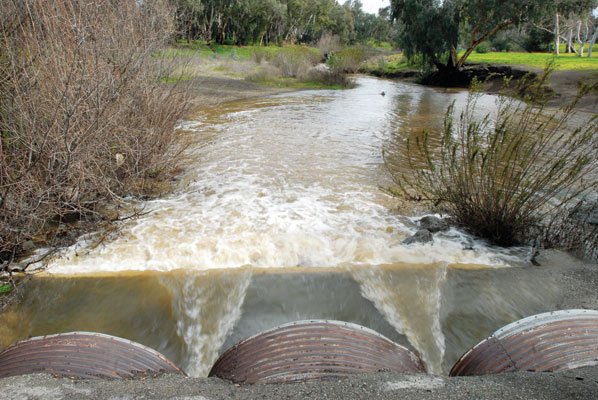The past week’s soggy weather will brighten to sunny skies
mid-week, but not for long, forecasters said.
The past week’s soggy weather will brighten to sunny skies mid-week, but not for long, forecasters said.
A little more than two inches of rain has fallen on Gilroy since an Alaskan storm blew into town last Wednesday, bringing with it cool temperatures and gusting winds and boosting the area’s seasonal rainfall total to about eight inches, depending on collection location. However, PG&E reported no significant local power outages and police said the storm brought nothing out of the ordinary.
Despite being the first significant storm of the season, the rain supplied by the past week’s steady drizzle is not enough to put a decent dent into the past three years’ drought conditions, water district officials said. By this time of year, average precipitation levels should amount to nearly twice the current totals, compared to measurements over the past five decades, said Meteorologist Brian Tentinger with the National Weather Service.
Over the last several years, significantly dry conditions have compounded the following years’ thirst for rain, he said.
“We need a good year or two to catch up and get things back on track,” he said. “This latest storm definitely helps out a lot but it’s a small drop in the bucket.”
But every drop counts when the regional water board is considering mandatory water rationing come spring for the first time in 15 years. The Santa Clara Valley Water District’s 10 local reservoirs are at 47 percent capacity or about 85 percent of their normal capacity for this time of year – good news compared to this time last year when reservoirs were at only 25.5 percent capacity and in February 2007 when they were even lower, at 15 percent capacity. However, there is still cause for concern compared to the bigger picture, water district staff said.
“This doesn’t get us out of the woods yet,” said district spokeswoman Susan Siravo. “Overall it’s certainly helpful to receive this amount of rain over the course of a week because it’s been dry for so long, but we need eight inches plus of rain to get us to where we need to be.”
Eight inches isn’t likely, however, this late in the season, especially when January and February are typically the wettest months, forecasters said. Another round of wet weekend weather is set to hit the region Saturday but “it doesn’t look that impressive,” Tentinger said.
If the region’s water supply doesn’t increase dramatically by a March 24 water board meeting, the board of directors could ask its customers to cut their water usage by up to 20 percent.
“By then we will have received most of the season’s rain and know what our allocations are for imported water,” Siravo said – imported water from sources such as the San Joaquin River Delta accounts for about half of the district’s total supply and has been significantly restricted in recent years as part of an effort to save the delta smelt.
Forecasters expect an 80 percent chance of showers today with a high of 53 degrees with 14 mph winds and an overnight low of 30 degrees. Sunny skies and temperatures peaking in the low 60s and bottoming out in the high 30s will round out the week, just before temperatures dip a few degrees with a 40 to 60 percent chance of rain going into the weekend and the following week.
Rainfall totals: season to date at Church Ave. station
2009: 9.21
2008: 12.91
2007: 5.75
average since 1957: 13.76
Sources: Santa Clara Valley Water District, National Weather Service
Levels of local reservoirs
Chesbro: 485 of 7,945 acre-feet – 6.1 percent
Uvas: 1,219 of 9,835 acre-feet – 12.4 percent
Coyote: 10,493 of 23,244 acre-feet – 45.1 percent
Anderson: 56,220 of 90,373 acre-feet – 62.2 percent
Source: Santa Clara Valley Water District












